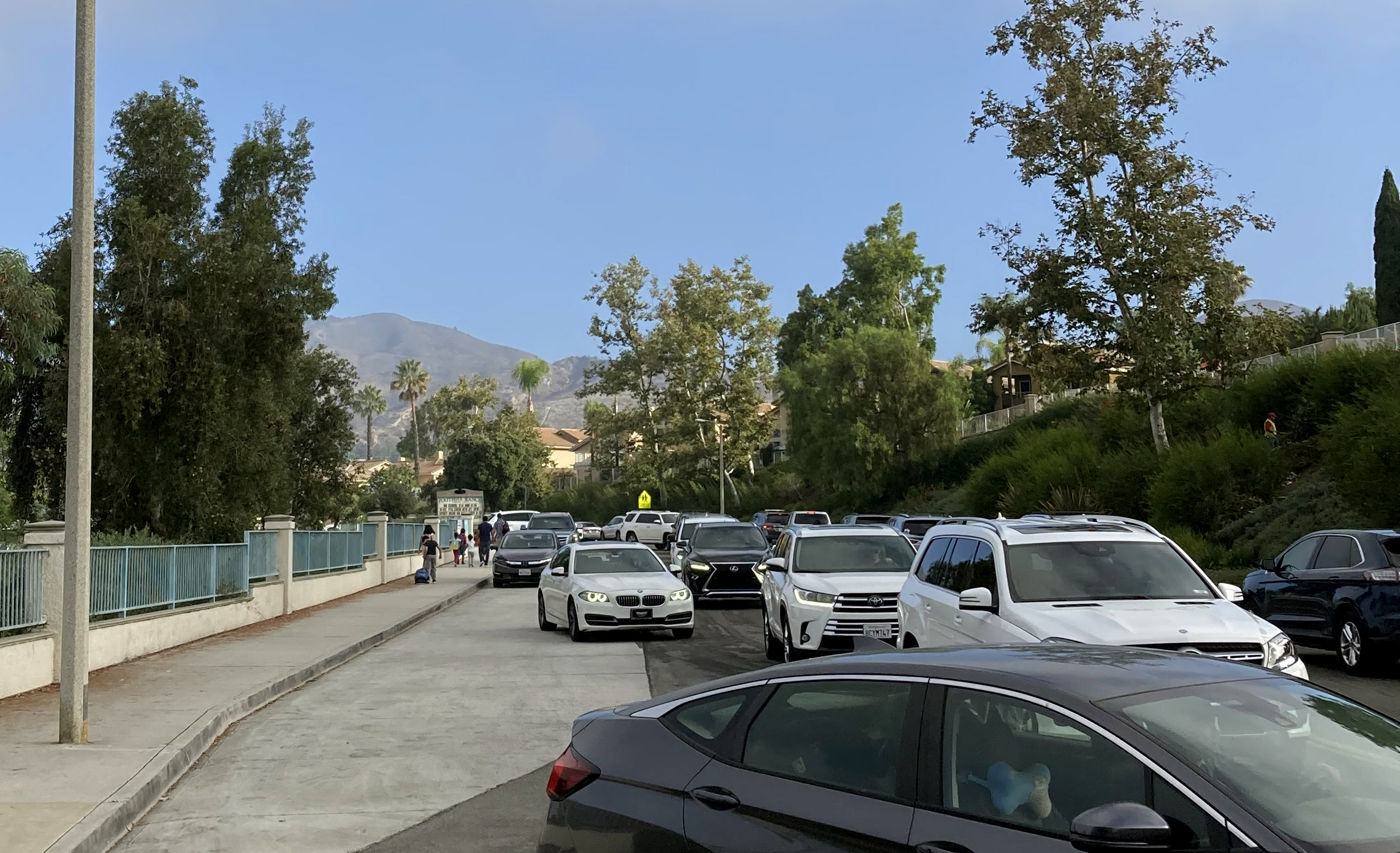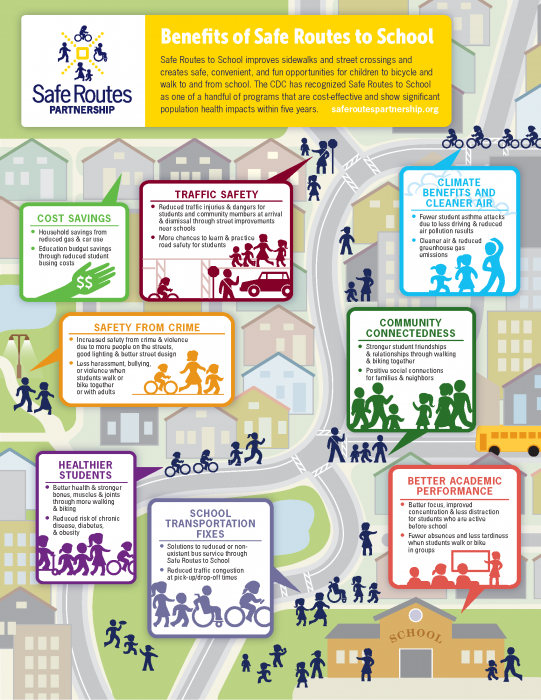
This spring, schools were finishing a year like no other. Students of all ages were eagerly awaiting summer, and everyone was looking for relief from the pandemic. At the same time, many Safe Routes to School practitioners, advocates, parents, and caregivers across the country were starting to think about the upcoming 2021-2022 school year. With school-aged children of my own, I was also getting concerned. Early research was showing the detrimental impacts the year of at-home learning had on kids’ physical activity, social and emotional development, and learning. Across the nation, school boards and superintendents were planning to bring kids back in person come fall however they could. The reopening of school campuses was likely to bring additional transportation challenges than before the pandemic with bus driver shortages likely, Covid-19 precautions necessary, and expenses on the rise.
Fast forward to present. School is back in session and the kids are back on campus. As a mom of three, I am two weeks into these school transportation challenges and have already had to make several adjustments to manage it all. One of my children (age 10) walks from unauthorized remote drop off spot. One (age 13) walks to the bus stop, where an overcrowded bus picks her up, but it’s the best option due to the school location. The third is a new driver that I wish did not drive daily, but the bus has presented itself as unreliable in both timeliness and duration. I feel for all of the parents and caregivers who are juggling the health of our children, the education of our children, and likely our health, careers, and wellbeing on top of it all. So, what do we do? We pause and take care of ourselves and our family, do our best, and press on for solutions that solve multiple problems at once, like Safe Routes to School. Of my three children, the one in the best situation is the unauthorized remote drop-off because she gets her daily walk to/from school with friends connecting to all that was lost last year and preparing for the day ahead. As I’ve heard parents complain about bussing and school drop-off/pickup, I have shared this strategy with many. I may not be able to solve larger school siting issues or bus driver shortages on my own, but I’m starting where I can - especially since I don’t have the extra 2 hours in the day to sit in the ¾-1-mile-long school drop-off and pickup line!
Back here at work, we set out over the summer to support the field with resources and messaging, lifting walking, and rolling to school as the best solutions for school transportation in the new year. Safe Routes to School has always been at the intersection of health and learning, supporting increased physical activity, social connection, and better attendance. In addition to the many benefits of Safe Routes to School, we have also recognized and promoted throughout the pandemic that walking and rolling can offer safer alternatives to close contact and enclosed spaces.

As we release launch 4 of the Safe Routes Back 2 School campaign (coming September 21st), we are so proud of this effort that has been so well received by so many. From Zoom calls that provided crucial information, a morale boost, and new network connections to plug and play messages ready for local use, these efforts have been a success. I am thankful for our fantastic staff and the strong leaders in the Safe Routes community that stepped up from all over the country to give their time and expertise. Our work, however, is not over. Safe Routes to School is still not available in all schools. Its equitable implementation across population groups and even between neighboring cities is nowhere close to what we need for the health of future generations as this pandemic continues and beyond. While many of you have been able to hold steady or increase your efforts for the start of this year, let’s all think about how we can leverage this moment in time even more. Walking and rolling to school present so many real-time solutions and there is so much to gain over the longer term.
And as we roll into the Fall, we can use Walk to School Day as our annual opportunity to elevate Safe Routes to School. The National Center for Safe Routes to School manages the International Walk to School Day registration, which is October 6, 2021. Activities large or small, rolling or walking, are welcomed. Let’s make this year bigger than ever as we demonstrate what could be possible year-round igniting interest in other changes that support healthy communities, including increased School Streets and Safe Routes to Parks.
Walking School Buses and remote drop-off can be programs endorsed by a school or started by parents. A Walking School Bus can be a benefit to students, families, and schools as they provide daily physical activity for students, provide peace of mind for families whose children walk alone, and provide solutions to transportation issues like reduced and/or no bus service. For students that live further away from schools, remote drop-off locations can be identified within walking distance of the school where parents can drop off their children so they can join a Walking School Bus and walk the rest of the way to school. Click here to learn more about starting a Walking School Bus.
When we started the unfunded Safe Routes Back 2 School campaign last May, we knew it was needed and that a daily focus on what we were trying to produce would get us there the same way that all of us as parents, caregivers, practitioners, and advocates are trying every morning to find the light and guide ourselves and others forward reimagining the route to school, health for our families, inclusive communities, and the ability for everyone to thrive and achieve their potential. As we close out this Safe Routes Back 2 School campaign, we aren’t going away but will continue to provide resources, connections, and advocacy for walking and rolling to school and in everyday life. It’s what we do, and we appreciate your support. At the end of this month, we are hopeful for the passage of the Infrastructure Investment and Jobs Act, and in October, we will be sharing what we know about how to start, grow, or strengthen Safe Routes to School programs within the new federal transportation funding landscape.

